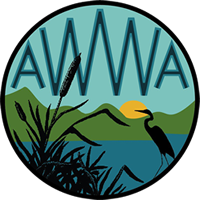Every spring, AWWA spends upwards of 3-5 weeks in the Wakefield Paul School and Acton Elementary teaching 6th graders about watersheds, water quality, invasive species, and macroinvertebrates. The program is part of our AWWA in the Classroom: Watershed Education for Future Community Leaders.
This year was one of our best years to date. Executive Director Linda Schier and Program Manager Dustin Johnson, with help from board member Chuck Hodsdon, attended 10 classes over a 3 week period (4 at Acton Elementary and 6 at the Paul School). The first two weeks teach the students about what a watershed is, what pollutes our waters, how we can protect it, and what sorts of invasive species are out there. The students at both schools were wonderfully engaged and eager to learn more.
The last week of classes is, by far, the student’s favorite (and probably ours too!). During the last class we bring in live macroinvertebrates, including dragon fly nymphs, beetles, crayfish, and, occasionally a leach, among many other critters.
Before each class, we go down to the Branch River in Union and do some kick netting to wrangle up as many little critters as we can to bring to the class. The students break up into three groups after a short presentation and spend the next hour observing and identifying the collected macroinvertebrates.
The students stay so engaged during the process. One by one, they remove, identify, and assign a “Pollution Tolerance Value” (PTV) to the critter. The PTV’s assigned to the specific macroinvertebrates is used at the end to classify the water quality of their “ponds”.
At the end of the class, the groups report back to the class on how many critters they had, how many different types of critters, the final PTV of their “ponds” and their favorite macroinvertebrate. All the ponds were found to be in excellent condition with regards to water quality and the critters living in them.



